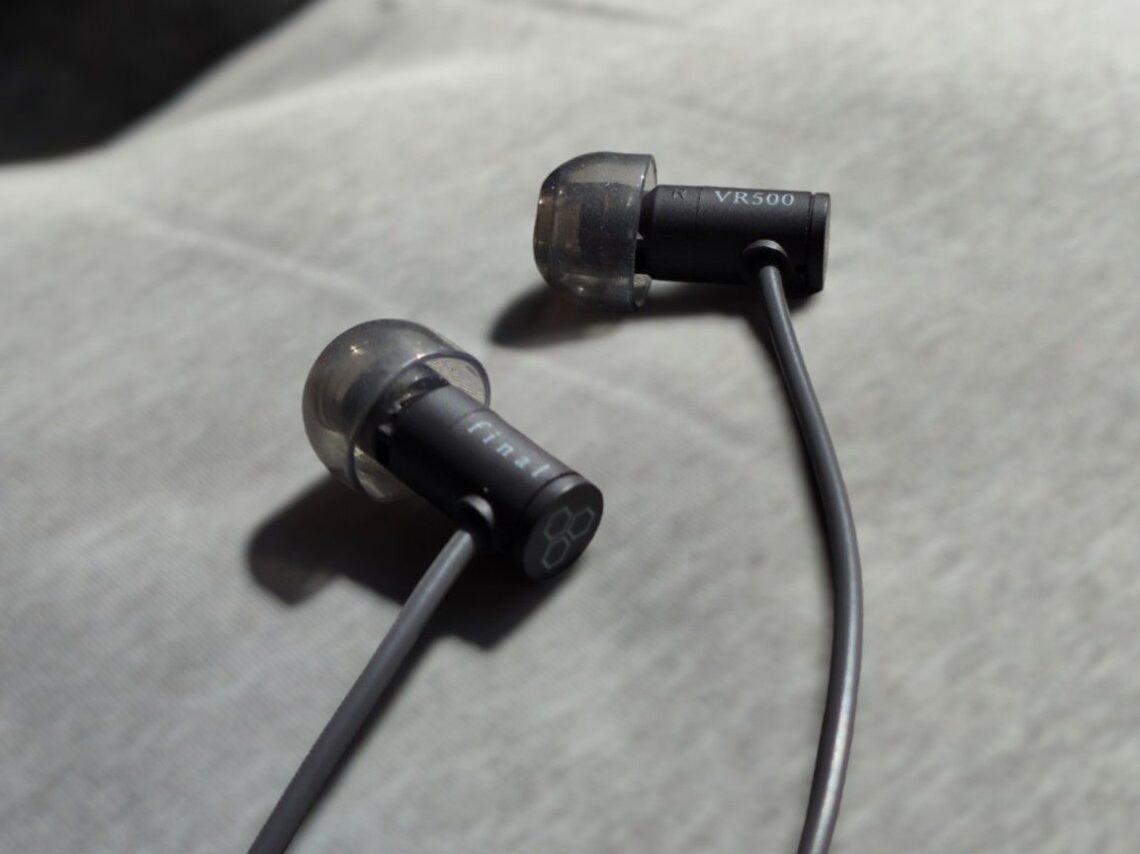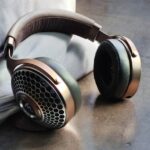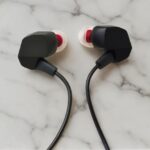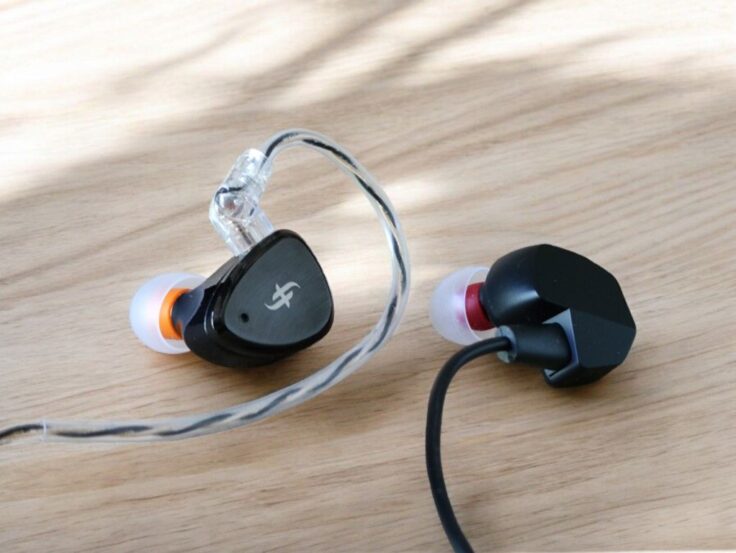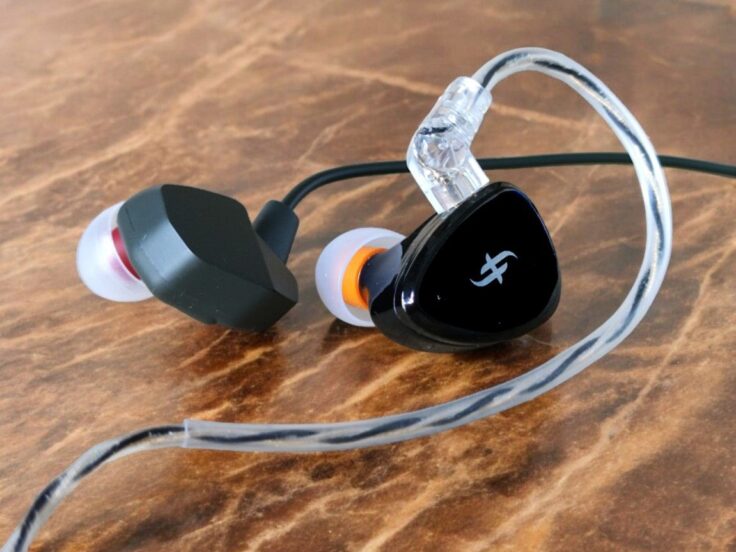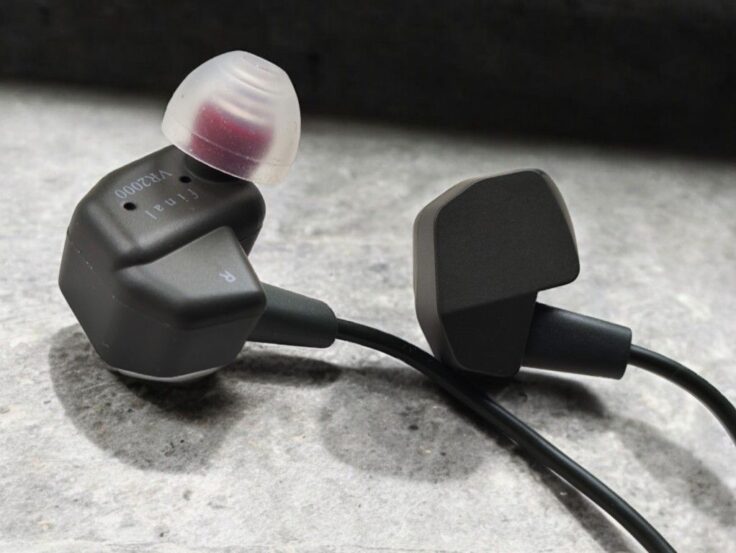The VR500 is the smallest and least expensive model in Final Audio’s new series of in-ear monitor headphones targeting gaming and VR applications. However, they are, of course, suitable for listening to all audio, including music, which will be the focus of this review.
The VR series consists of three models. The VR500 is an ultra-compact ear-canal barrel-type IEM, similar to Final’s classic E-series. The VR2000 and VR3000 have identical housings except for the color, and are standard-type IEMs that rest in your outer ear. All three have tangle friendly, non-detachable cables with a mic and function button attached and a 4-pole 90-degree 3.5 mm jack.
The VR-series is designed with a primary focus on natural soundstage and imaging. Combined with the microphone and buttons, this makes them especially well-suited for use with gaming and VR equipment like Oculus Rift, Sony PlayStation 5, Microsoft Xbox Series X, and various other platforms.
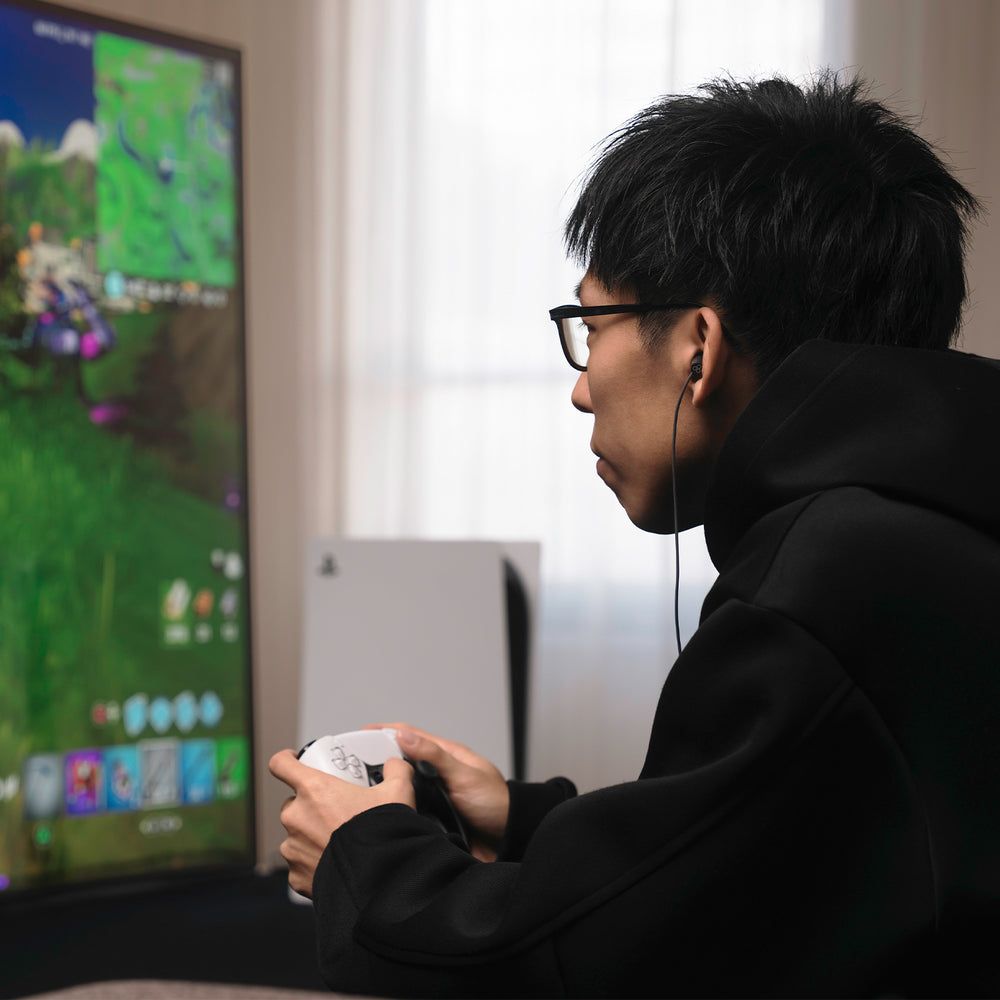

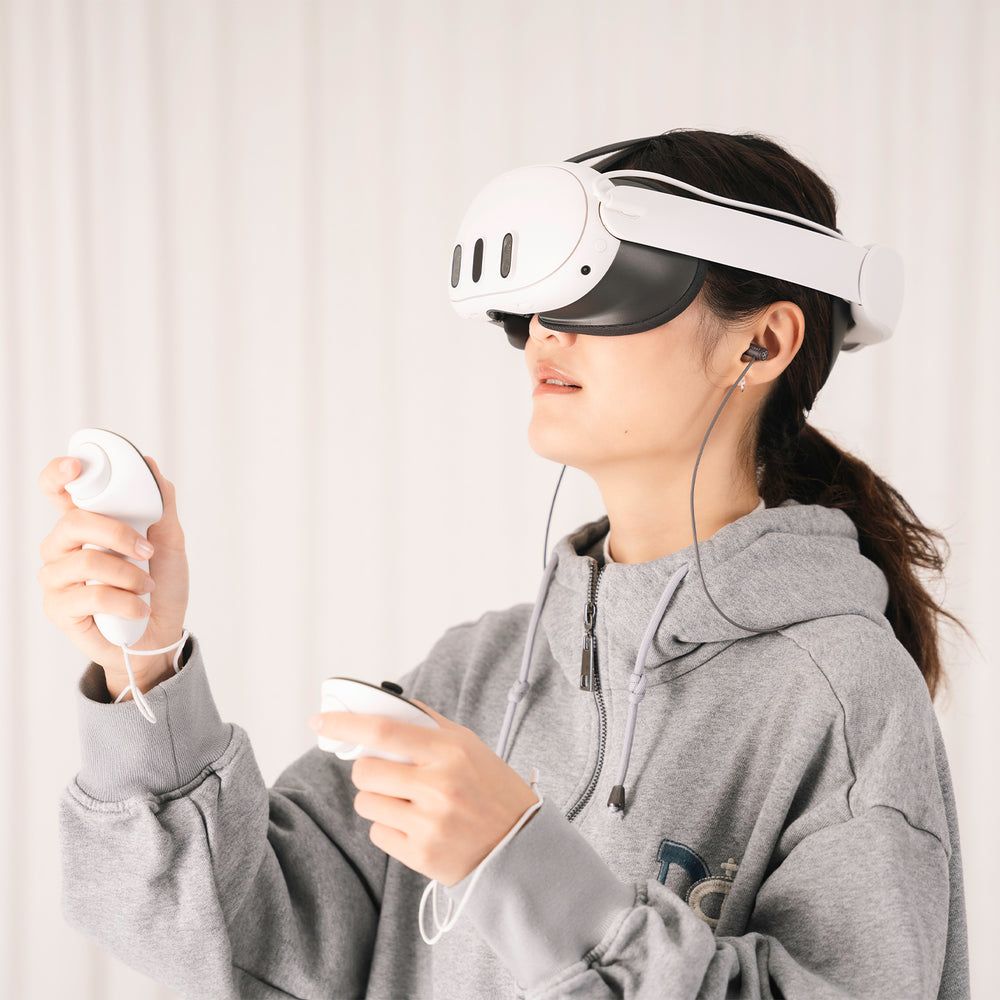
VR500 SPECIFICATIONS
- Driver: 6.4 mm dynamic driver
- Housing material: ABS thermoplastic
- Sensitivity: 98 db/mw
- Impedance: 18 Ohms
- Weight: 15 g
- Cable: 1.2 m non-detachable oxygen-free copper cable
- One-button controller and microphone
- Angled 4-pole 3.5 mm jack
Price when reviewed: 35 USD
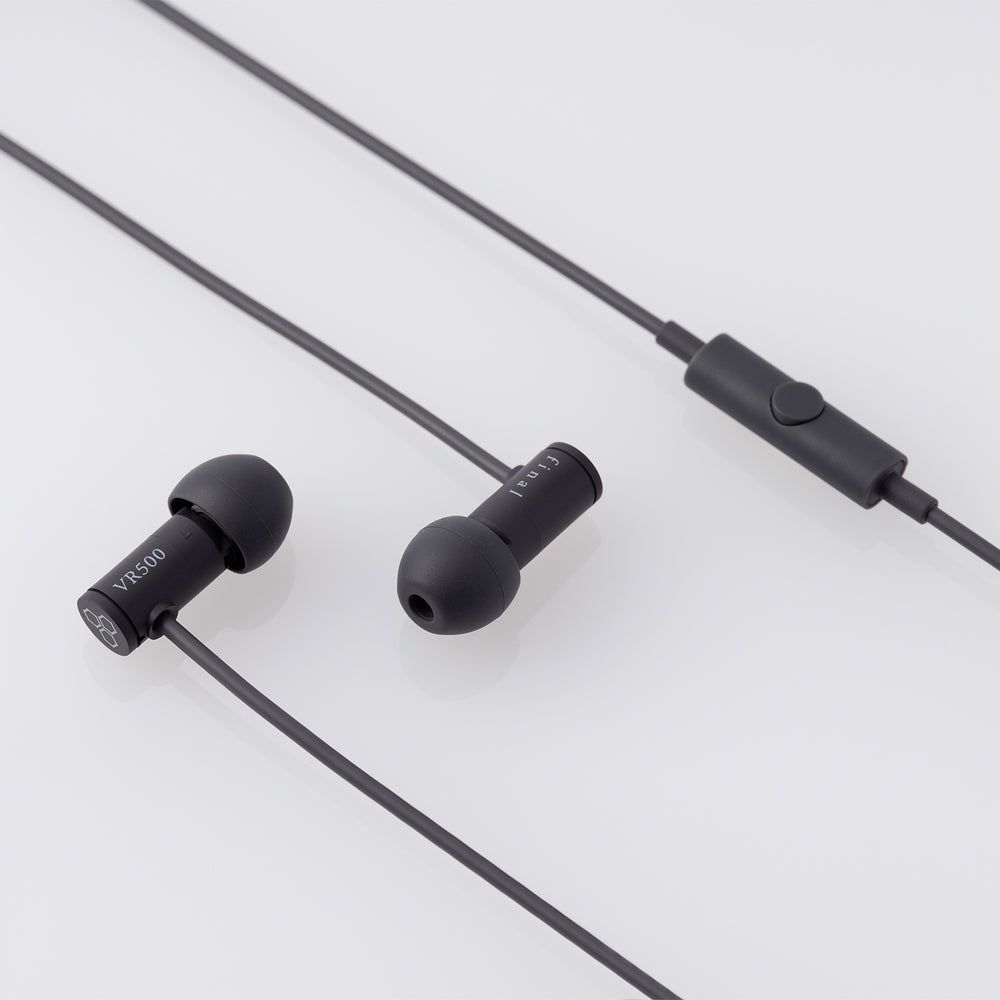
BUILD AND COMFORT
The VR500 is very small and extremely light, and it seems to be quite durable for what it is. Unlike most IEMs, the VR500 does not rest in your outer ear. The only thing that holds the earphones up is the friction between the eartips and your outer ear canal. Since they are quite long and the cables are at the end of the cylindrical housing, the cables will drag them down and out if the ear tips don’t fit and have the right amount of friction and rigidity.
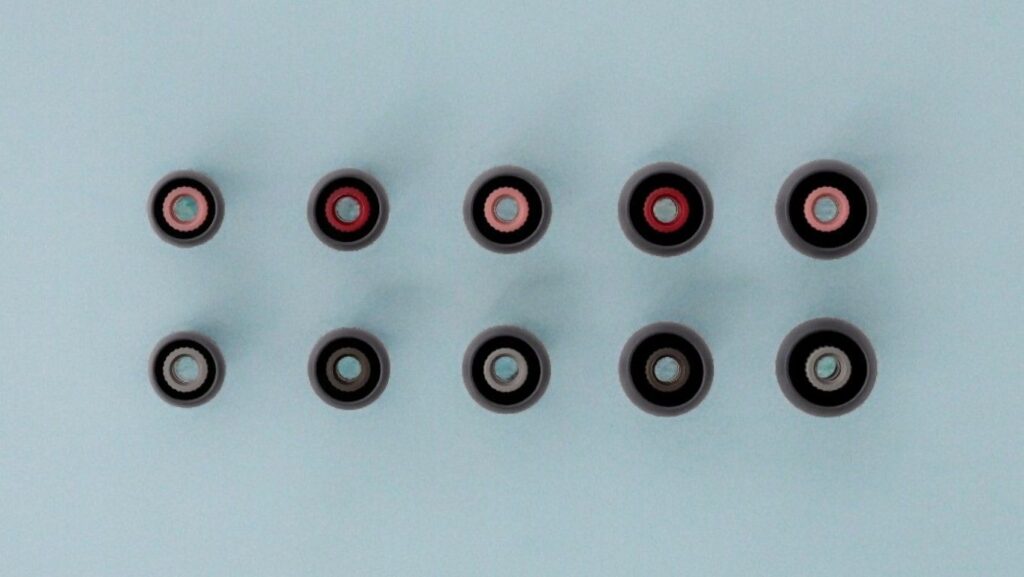
The VR500 comes with a selection of silicone ear tips in five sizes, conveniently marked with different colors. They are quite soft, and I personally had a problem getting a good seal and making the earphones sit put in my ear. Getting the right tips is always important, and if the supplied ones don’t work for you, there’s no reason to give up.
Thus, I turned to aftermarket tips. The AZLA SednaEarFit Xelastec works very well. They are made of a thicker and more rigid material with much more friction, which helps the VR500 to sit perfectly in my ear. They’re a bit difficult to get in place, but once they’re in, they’re sitting there with a secure fit.
The SpinFit CP100 also works well for me, they’re easier to insert but more prone to come loose.
The cable is non-detachable and has a mic with a function button on. It’s 1.2 m long and has an angled 4-pole 3.5 mm jack. It’s made of a material that makes it surprisingly resistant to tangling.
There is nothing else in the box than the earphones and the five pairs of silicone tips, but I wouldn’t expect more at this price point.
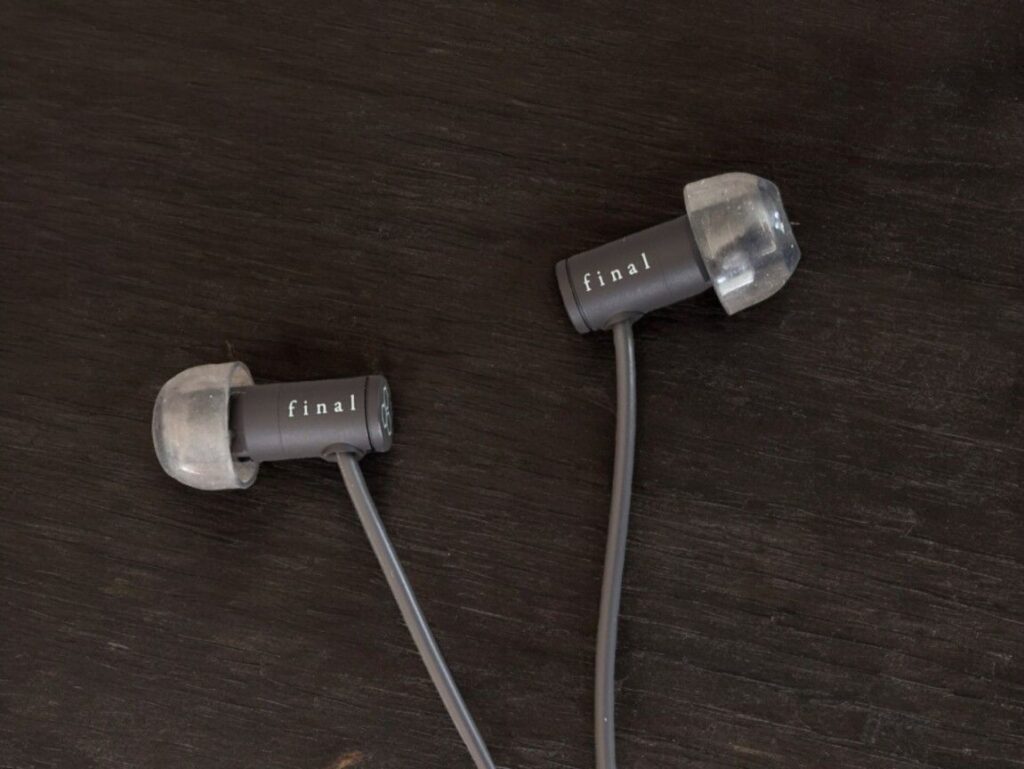
LISTENING IMPRESSIONS
Below are some track-by-track listening impressions, using my desktop rig.
Feel Like Making Live! by Bob James Trio
This album is recorded binaurally and is excellent for testing spatial capabilities as well as musical performance. It’s a great jazz album, and it sounds terrific with the VR500. It’s very well balanced, with great dynamics, nicely tight and deep bass, and clear but not intrusive highs. The VR500 is really excellently tuned, and the soundstage is pretty wide and deep.
Jambi by Tool
The bass is powerful and with good detail; the guitars are textured but full-sounding; the vocals are clear and articulate but without annoying sibilance. There’s nice layering too.
The Golden Age by Beck
The drums are very punchy and dynamic. The guitar and vocals are quite crisp, the treble could be more effortless, but considering the price, I’m not really complaining. Great image depth.
Lazarus by David Bowie
Another track with a very punchy drum sound that lets the VR500 showcase its dynamic capabilities. The vocals are clear and upfront. The upper mids and lower treble are relatively present, making the sound somewhat bright-leaning. The bass is impressive for such a little thing.
Come Away With Me by Norah Jones
The bass has good detail, but it isn’t as full as I’ve often heard it with this track. The vocals, piano and guitar are nice, but if you pay three times more, they’ll sound better.
Yoshimi Battles the Pink Robots by The Flaming Lips
The bass is impressively tight and dynamic. The midrange is a tad on the crisp side. Imaging and separation are very good.
Summer 3 – Vivaldi Recomposed by Max Richter
This sounds really excellent on the VR500. The strings are nicely textured, and there is warmth and air. Imaging is good, and layering is impressive.
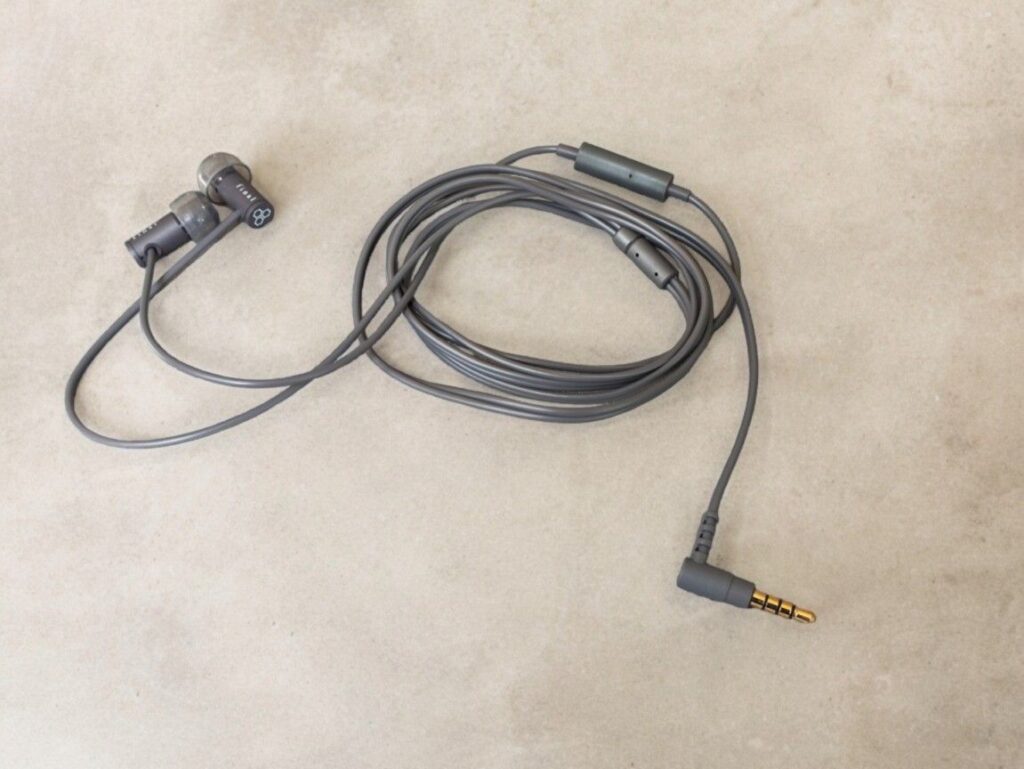
WRAPPING IT UP
Sound Signature
I find the VR500 to have a really nice and balanced sound signature with punchy but tight bass, upfront mids, and present highs.
Treble
The treble quantity is well balanced, and there is seldom a problem with sibilance. However, we are talking about entry-level IEMs, and even though there’s good detail, you get more refined treble in more expensive IEMs.
Midrange
Vocals and instruments are always clear, articulate, and easy to hear. There is a tad more energy in the upper mids than the lower.
Bass
As long as you get a good seal, the bass is really impressive. Quantity wise, it is pretty perfect and not too much, and it is very tight and has good definition without becoming dry.
Soundstage and Imaging
Marketed as an earphone specifically suited for gaming and virtual reality scenarios, imaging is very important. I am not a big gamer, but I’ve experimented a bit more than usual and find the imaging to be quite good, with especially nice layering and depth. The sound stage is nothing unique; it’s an IEM, and there’s no coming around it.
Detail, Dynamics and Timbre
The general detail level is impressive at this price point. For music listening, I’m especially impressed by the bass. It’s very well rendered, with great definition and punch, again, if you get a good seal. I needed to get some aftermarket tips to get the VR500 to work optimally for me. The timbre is excellent in the bass, the mids are clear and crisp, and the treble absolutely fine.
COMPARISONS
KIWI EARS CADENZA vs. VR500
The Cadenza (35 USD) has become a very popular entry level IEM, and with good reason. It offers truly excellent performance at its price point.
In terms of sound quality, the Cadenza and the VR500 are, in broad terms, pretty much on par. Sometimes I prefer one, sometimes the other, but I feel the Cadenza is often a tad better.
The sound signature is quite similar, with the VR500 being slightly more midrange-centric and the Cadenza having a bit more bass quantity. There are variations between them, but not enough to be much of a decisive factor compared to the more obvious difference in terms of what they are: The VR500 is lighter, smaller, and has a mic and a function button on the cable. The Cadenza is a full-size IEM that rests in your ear, has a detachable cable, but no mic is included. It is easier to get a good seal with the Cadenza. It is also more sensitive and less demanding of the amplifier if that is a concern.
You can check out the Cadenza here:
- Amazon Kiwi Cadenza
- Linsoul: Kiwi Cadenza
FINAL VR2000 and VR3000 vs. VR500
The VR2000 and VR3000 are the VR500’s bigger brothers. They are almost identical and have a different form factor than the VR500; like the Kiwi Ears Cadenza, they rest in your outer ear. They have the same mic cable as the VR500, but there are three instead of one control button, letting you adjust the volume.
The VR2000 and VR3000 are sonically quite different from each other. The VR2000 is extremely crisp and clear, with enhanced imaging but with less bass quantity and dynamics. The VR3000 is more like the VR500, just with more bass and slightly better audio quality. Both the VR500 and the VR3000 are less intense in the upper regions than the VR2000. The midrange is pretty similar on all three; I’d call it politely present.
Personally, I find the form factor of the VR2000 and VR3000 better in practical use, and it’s nice to have volume controls on the cable. They are also easier and faster to insert. The downside is that they’re more bulky and expensive.
- Amazon: VR3000
- Amazon UK: VR2000 and VR3000
- Amazon DE: VR2000 and VR3000
AMPLIFICATION
I have used the Topping A90 and the RME ADI-2 DAC FS for my listening so far. It’s practical for me when reviewing, and it’s always good to have neutral and high-quality upstream gear. However, most people will use these earphones with phones, dongles, computers, or portable DAC/Amps.
Starting with my POCO F5 phone’s headphone output, it sounds quite okay but needs the volume set to 80–90%.
The xDuoo Link2 Bal is very good, as is the THX Onyx USB C-dongle, both with the volume set to 50–60%.
The difference between the two dongles and my desktop setup is negligible.
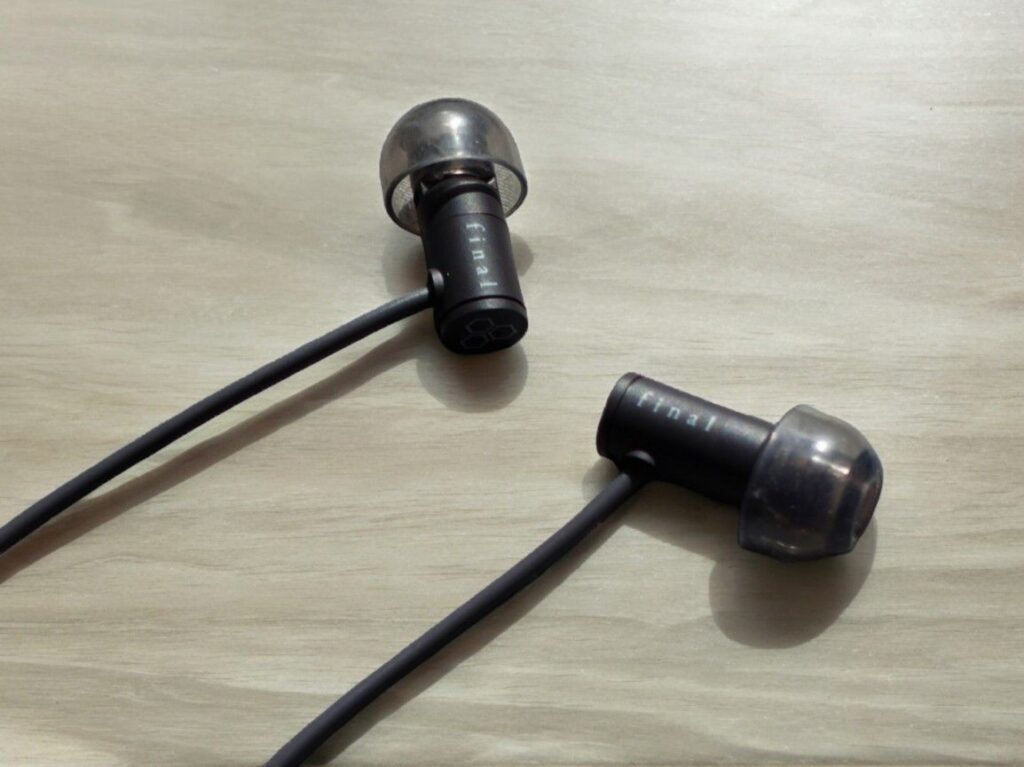
CONCLUSION
The VR500 offers great sound quality in an extremely compact form. It is on par with some of the better full-size IEMs in the price range.
In order to get the best sound quality, especially in the lower regions, it’s very important to get a good seal. I found that difficult with the supplied ear tips, but using aftermarket tips with more friction, the VR500 worked very well. It’s impressive how Final has managed to make such small earphones sound this good for such a low price.
Stay tuned for the upcoming reviews of the VR2000 and VR3000
Purchase links:
Any purchase you make on Amazon or Linsoul with any of our affiliate links will give us a small provision at no cost to you.
We only get a provision for items that are not returned, so there’s no incentive for us to recommend something that’s not good.
Linsoul : Headphones, Earbuds, Wireless Earbuds, Desktop DAC/AMP, Portable DAC/AMP, Digital Audio Players,
Amazon: Headphones, IEMs, Headphone Amplifiers, Home Audio or Anything else.
.
If you enjoyed this article or other content on The Headphoneer, you might consider leaving a small donation to keep this website up and running. No donation is too small. Thanks for supporting us!
If you like our work please follow us on Instagram, Facebook and Twitter , it will help us grow. Sharing is caring 🙂


